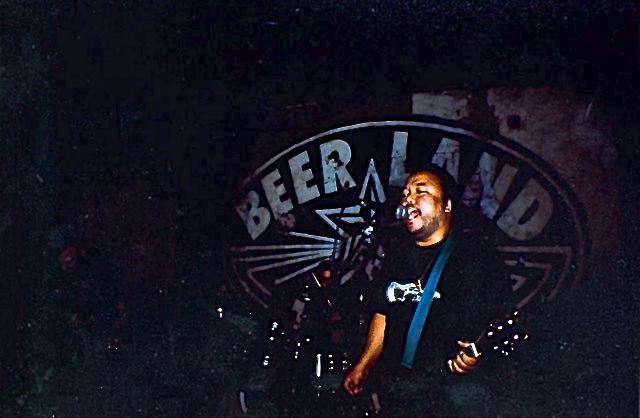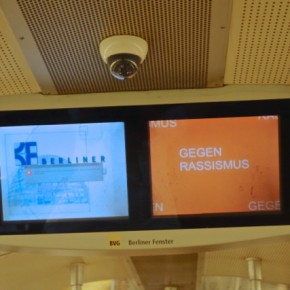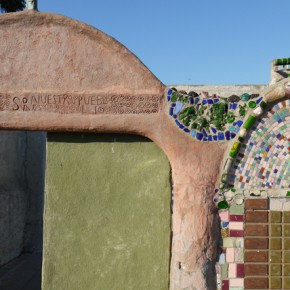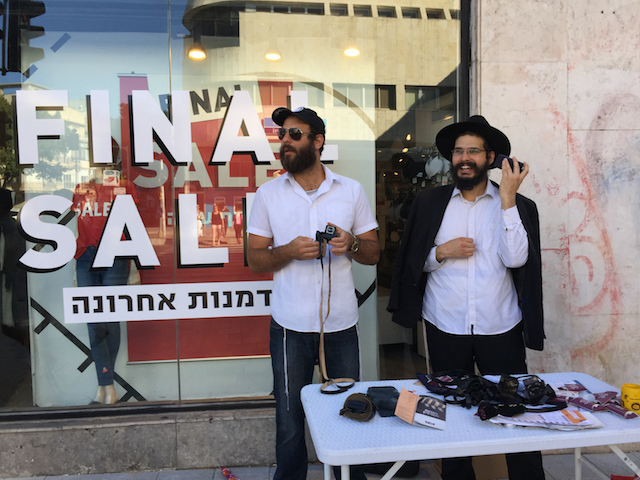It’s not every day you walk into your local newsstand and find a twelve-year-old zine written by one of your favorite musicians, seemingly abandoned behind a stack of vintage copies of Punk Planet, and way too many issues of Revolver. But I did. Call me nostalgic, but I still can’t get over it. With good reason.
When J Church vocalist Lance Hahn passed away in 2007 following a lengthy illness, I felt crushed. It wasn’t just his music, though that was obviously a huge part of it. Hahn had fronted J Church and his previous band Cringer for more than three decades, and was an instrumental member of the punk and activist scenes first in his native Hawai’i, and then in his adopted homes of Los Angeles, San Francisco, and finally Austin. His music was explosive and fun, and his lyrics as crass and biting as they were intelligent. Listening to J Church could be a lesson on jazz or anarchist history, or the simple commiseration with someone who you can tell gets just as bummed out as you do.
J Church resonated with me more than other bands exactly for those reasons. While one song would be talking about the heartache of alienation, the next would be about baseball or Bikini Kill. While Lance wouldn’t have known me from Adam – though the close nature of punk meant that we had some friends in common – he constantly went out of his way to try and connect with everyone around him. When his kidney disease was at its worse, and his time was spent in an epic loop from home to dialysis to doctors appointments and back, he was constantly posting updates to MySpace and we’d occasionally exchange messages.
The last time I saw J Church play was in Austin, during South by Southwest, in March of 2007. It was exciting to see them again, but mostly it was just amazing to see Lance playing music, especially considering everything he had been through the past couple years. The excitement and happiness that was normally so present in him was magnified ten fold that day. I went up to him after the set and told him as much. I gave him a hug and just thanked him for being there. Lance died six months later of complications stemming from his ailment. He was 40, and left behind a huge body of work.
Lance published his zine Some Hope and Some Despair for a number of years. It was never a regular thing, just something he put out when he’d collected enough writing to warrant a new issue. Lance was also a frequent contributor to Maximum Rock n’ Roll; the zine sometimes served as a launching point for his MRR articles and vice versa. But before all that was the J Church/Honey Bear Records newsletter It’s a Living But it’s Not a Life, which was in print and then online from the mid-1990s up until Lance’s death.
Those missives mirrored Lance’s life in the same way his band and label did. Everything for him was seemingly linked, and he approached his writing with the painful honesty of someone who truly felt the need to communicate with others.
The Some Hope issue I found was published in mid-2001. Reading it felt like falling down a rabbit hole to an immediate post-9/11 world of anger and confusion. It includes interviews with Joseph Porta from The Mob and Tony Barber and Danny Drummond from Lack of Knowledge, both British anarcho-punk bands. Lance had been working on a book on anarchist punk for years, and it was close to being done when he died.
While the interviews are interesting, especially if you have any interest in punk history, it’s the “Rants and Raves” section of the zine that truly stands out. In it Lance reflects on September 11th – “Americans seem to think they’re Romans in the Coliseum and historically Bush isn’t opposed to keeping the people happy with blood sports.” Palestine and the Vietnam War are also on his mind (See J Church’s Palestine LP.) He includes a few obituaries for people – and bands! – that were important to him, not to mention an article on “Commodity Fetishism and the D.I.Y. Ethic” in which he talks about the nature of addiction in the punk community.
My favorite article in the zine isn’t about punk at all. “Star Wars and the 75 World Series” relates “the two greatest moments” of Lance’s life – the first time he watched Star Wars, and October 21st, 1975, the day the Red Sox won game six of the World Series – in a way that’s completely effusive, and fun. Reading through the issue is like listening to a J Church album: a piece on Lance’s plans to celebrate Ronald Reagan’s death is followed by an article on avant-garde jazz and an interview with Steve from Kronstadt Uprising. It’s all interesting, and it’s all very relatable.
That’s what I’ve always loved about J Church, since the first time I picked up one of their 7”s in the late ’90s. While many bands implore you to go out and read about whatever tragic and terrible event they’re singing about, J Church made me want to listen to Eric Dolphy records, research the May ’68 events in France, and strive to make the world a better place, despite knowing full well that I’ll probably fail. Unsurprisingly, the lyrics to their classic “Nostalgic for Nothing” constantly get stuck in my head:
“What’s left behind
A room that’s big and undefined
A dying light
I lie awake alone at night
And I don’t care
I know that life cannot be fair
I know that life cannot be fair
I feel nostalgic for nothing
I am the pawn
I am the king”
For Lance Hahn, there was so much left behind. But even though he put out dozens of recordings with both J Church and Cringer, not to mention all the articles and zines, it still seems like there was a lot left unsaid. Six years after he died and I still can’t believe there won’t be another J Church song. All we can do is listen to old records and hope to be inspired anew.
Photograph courtesy of Katherine Strickland. Published under a Creative Commons license.





